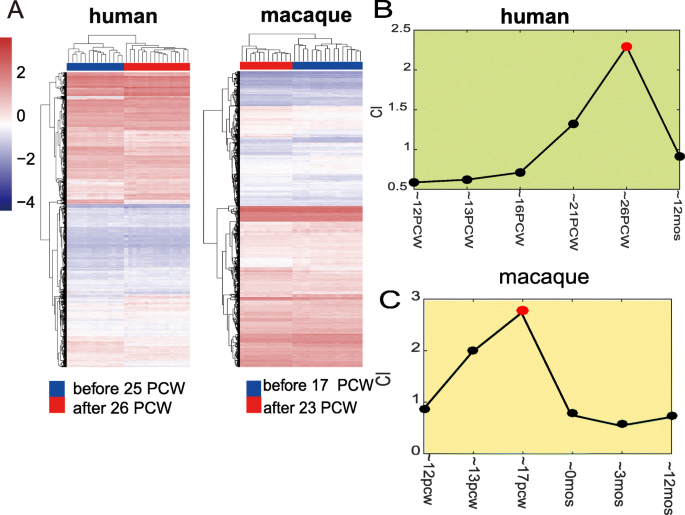The human brain, with its unparalleled complexity and cognitive abilities, stands as a testament to millions of years of evolution. Yet, the mechanisms underlying the evolution of the primate brain, including our own, remain shrouded in mystery. In a pioneering study, researchers from the University of Massachusetts Amherst have embarked on a quest to decode the genetic blueprint of primate brain evolution. By examining the intricate interplay between gene expression and brain function across a diverse array of primate species, their findings promise to illuminate the evolutionary forces driving the development of the primate mind.
1. Unveiling the Genetic Landscape of Primate Brain Evolution
The study, led by Katie Rickelton and Courtney Babbitt, represents a groundbreaking effort to unravel the genetic underpinnings of primate brain evolution. Leveraging advanced sequencing technologies, the research team embarked on a comprehensive analysis of RNA transcripts extracted from brain tissue samples sourced from 18 primate species. By mapping the expression patterns of over 17,000 genes across multiple brain regions, the researchers sought to elucidate the genetic signatures associated with primate brain evolution.
2. Exploring the Evolutionary Dynamics of Gene Expression
One of the key insights gleaned from the study is the remarkable degree of variation in gene expression observed across primate species. Despite sharing a high degree of genetic similarity, humans and chimpanzees exhibit distinct patterns of gene expression, underscoring the role of evolutionary divergence in shaping the primate brain. Moreover, the researchers identified notable differences in gene expression profiles across different brain regions, shedding light on the functional specialization of distinct brain regions in primates.
3. Evolutionary Paradoxes and Insights
The findings of the study shed light on a longstanding evolutionary paradox: despite sharing nearly identical genetic sequences, humans and chimpanzees display striking differences in brain structure and function. By examining the regulatory mechanisms governing gene expression, the researchers uncovered potential genetic determinants underlying these differences. Moreover, the study highlights the evolutionary significance of the cerebellum, the oldest part of the brain, in shaping primate brain evolution over millions of years.
4. Implications for Understanding Brain Function and Disease
Beyond unraveling the mysteries of primate brain evolution, the study holds profound implications for understanding brain function and disease. By pinpointing specific genes associated with cognitive functions and metabolic processes, the researchers have laid the groundwork for future investigations into the neural basis of primate behavior. Furthermore, insights gained from studying primate gene expression patterns may provide valuable clues for understanding and treating neurodegenerative disorders such as Alzheimer’s disease.
5. Future Directions and Concluding Remarks
As the quest to decipher the genetic basis of primate brain evolution continues, the study underscores the importance of interdisciplinary collaboration and advanced genomic technologies in unraveling the complexities of the primate mind. By elucidating the genetic mechanisms driving brain evolution across diverse primate species, researchers are poised to unlock new insights into the origins of human cognition and behavior. As we journey further into the realm of primate brain evolution, the path ahead promises to be filled with exciting discoveries and transformative insights into the nature of our own humanity.
